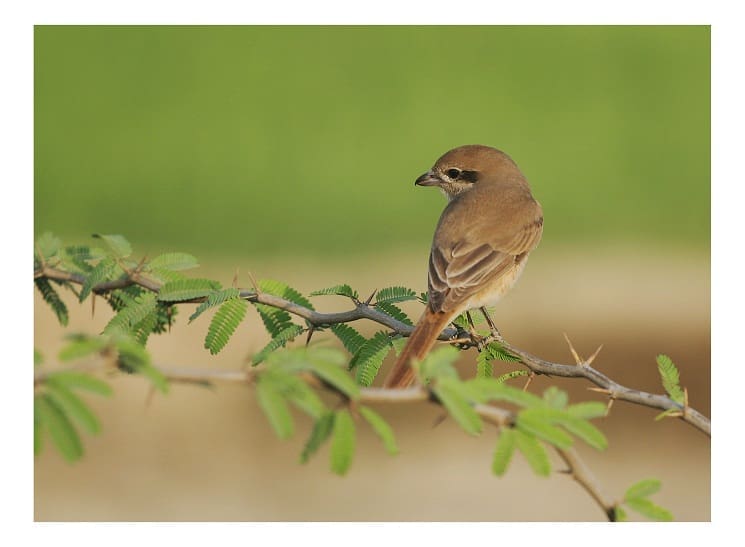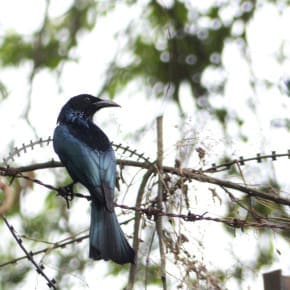Often, the stupidest questions elicit the most enlightening answers. Such was my initiation to the little featherball known as the Rufous-tailed Shrike. I’m glad I asked, though…
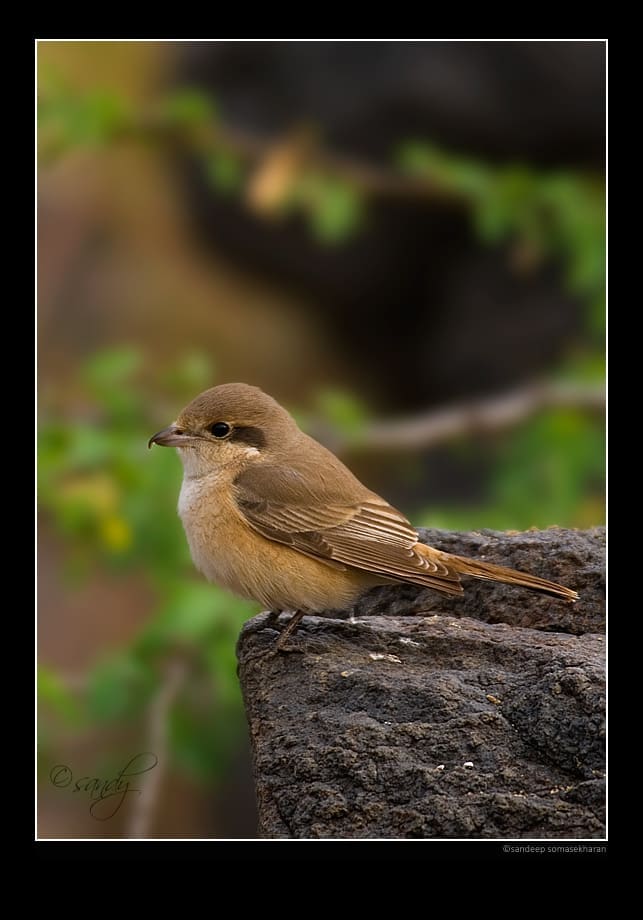 I am responsible for one of the dumbest questions in Birdingdom. This is a belated confession.
I am responsible for one of the dumbest questions in Birdingdom. This is a belated confession.
One fine February evening we were happily maneuvering a pot-holed road in Rae Bareli as GS scanned the acacia bushes beside the road for birds. Suddenly he exclaimed, “Rufous-tailed Shrike!” (Beams with excitement, asks driver to stop.)
I saw the bird and inquired, “Why is this Rufous-tailed Shrike?” It was actually three questions:
Why is this bird a shrike?
Why is it a Rufous-tailed Shrike?
What are you so excited about?
You must have realized that I had figured it was a bird. I also had a passing familiarity with the color rufous.
Prickled by the question but managing to keep his composure (the sighting helped), GS snapped, “Observe.”
This I did.
Lanius isabellinus is a small shrike with a hooked bill adapted for tearing flesh. It has a grey or sandy-brown mantle, a prominent rufous tail and grey-brown ear coverts. The male has a white patch at the base of the primaries (this is absent in the female) and the female has faint dark scaling on the breast and flanks. The bird in the last picture seems to be a first winter specimen since it has the overall coloration of the female (including the faint dark scaling on the breast), lacks the white patch at the primaries, but has the dark black lore of the male. The bird in Sandeep’s photo (the lead pic) is an adult female (lacks the white patch on the primaries).
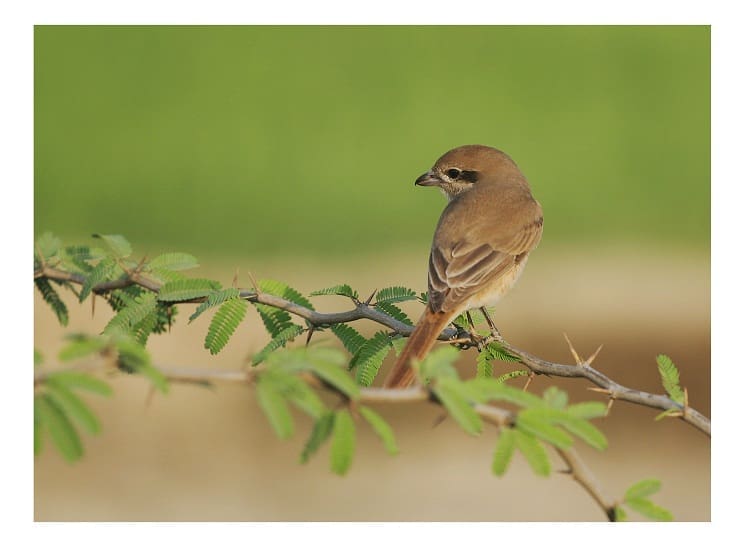
In winters the bird frequents wooded country along canals, riparian tracts and acacia vegetation along small roads. It breeds in the highlands of Baluchistan, southern Siberia and the Daurian steppes of central Asia.
The Rufous-tailed Shrike eats smaller birds, lizards and rodents and has the gruesome habit of impaling its prey on thorns and barbed wires. It is usually found atop bushes and small trees – a prominent perch for hunting. The bird we saw flew down and picked up a large ant (see pic below).
Going by the field guide that we were using, the shrike had no business to be there. However, one cannot really fault the birding guides for this as the basic information regarding winter and summer ranges of migrants is quite archaic – some of it survives from the days of Salim Ali and the British ornithologists. Bird checklists for some districts in UP are last updated by the district collectors and amateur British naturalists (A O Hume was the Collector of Etawah and the district is an exception, thanks to Gopi’s fieldwork. The checklist is quite current with 400+ birds). Most siting data continues to be reported from IBAs and established sanctuaries but very few birders visit the offbeat places, which are not well-known or are simply off-track. This leads to over-reporting from certain parts while creating birding blind-spots at the same time.
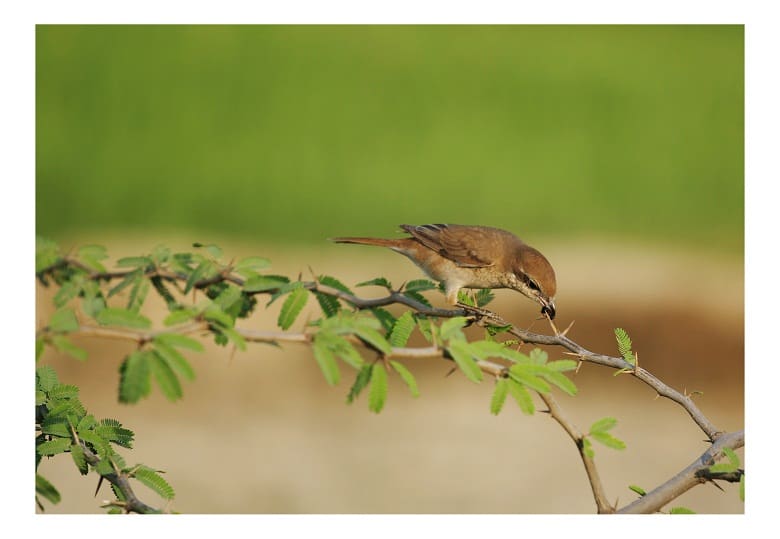
The grand old man of Indian ornithology was wise enough to avoid bias and made sure that he birded in places like Bastar, Bahawalpur, Districts of United Provinces, Afghanistan, etc. where few people venture today. He had birded in Rae Bareli and has reported the Siberian Crane from there. In my multiple visits to Samaspur, a bird sanctuary in the district, I have never encountered birders. The sanctuary staff tells me that such visits are fewer than a dozen in a year.
Moreover, the migrants can shift the wintering range based on factors like temperature, cropping pattern and rainfall. This is both seasonal as well as gradual shifts over time. This makes it all the more necessary for the data gathering to be extensive and well-planned.
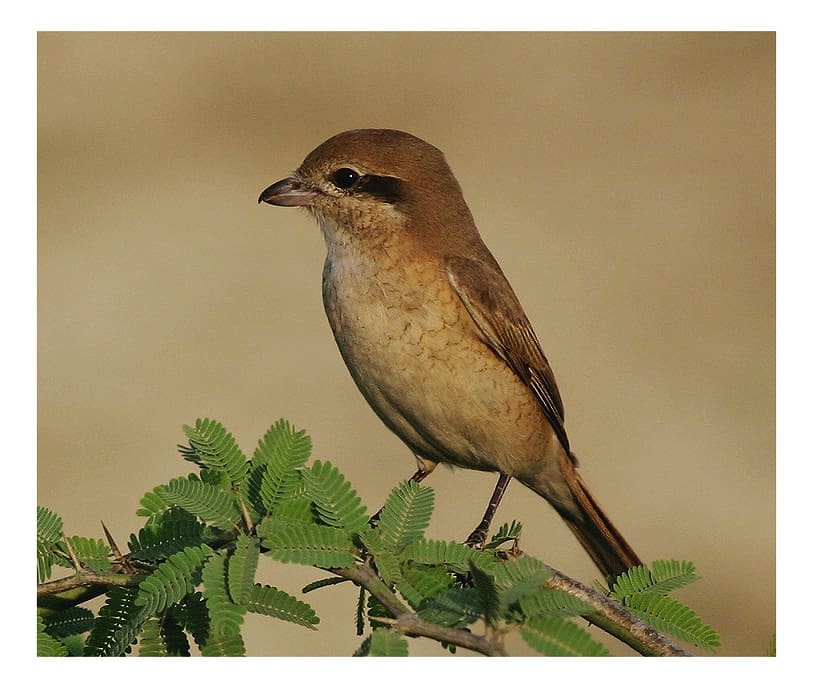
The shrike sighting turned out to be good birding education. The presence of this elegant little predator indicated that the migratory season was well underway. Moreover, migrants can often be found in areas in which they have not been recorded earlier either due to a shift in range or gaps in information. So it’s good birding practice to keep looking for them. This is where initiatives like MigrantWatch are both welcome and necessary since they enrich our knowledge about these lovely avian tourists as well as track shifts in arrival times and geographical spread.
Incidentally (now that I am on serial confession mode), I am also responsible for one of the most stupid answers in all Birdingdom. More on that later. Patience, dear reader. Or patientez s’il vous plait, in case you are Francophone.
- Encounter: The Sacred Grove at Oorani - November 28, 2012
- Encounter: Rhododendron, sentinel of the highlands - October 7, 2012
- Manjhi Akshayavat, an immortal Banyan tree - July 17, 2012

